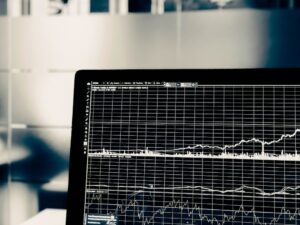Technology has revolutionized the way we live, work, and even trade in financial markets. In recent years, the forex market has seen a significant impact from advancements in technology. From electronic trading platforms to algorithmic trading systems, technology has played a crucial role in shaping the live forex markets.
One of the most significant contributions of technology to the forex market is the development of electronic trading platforms. These platforms have made it possible for individual traders to access the forex market directly from their computers or mobile devices. Gone are the days when traders had to rely on phone calls or physical exchanges to place their trades. With just a few clicks, traders can now execute trades instantaneously, providing them with greater control over their trading decisions.
Electronic trading platforms have also made the forex market more accessible to a wider range of participants. In the past, forex trading was dominated by large financial institutions and wealthy individuals. However, with the advent of electronic platforms, anyone with an internet connection can now enter the forex market. This has democratized trading and created opportunities for retail traders to profit from the forex market.
Another technological advancement that has transformed the live forex markets is the rise of algorithmic trading systems. Algorithmic trading, also known as automated trading, involves the use of computer programs to execute trades based on predefined rules and strategies. These systems can analyze vast amounts of data and react to market conditions in real-time, far quicker than any human trader could.
Algorithmic trading systems have several advantages over traditional manual trading. Firstly, they eliminate the emotional biases that often affect human traders. Fear and greed can cloud judgment and lead to poor trading decisions. Algorithmic trading systems, on the other hand, execute trades based solely on predefined rules, eliminating emotional biases from the equation.
Furthermore, algorithmic trading systems can execute trades at a much higher speed than human traders. In the fast-paced world of forex trading, milliseconds can make a significant difference. With algorithmic trading, trades can be executed in a fraction of a second, ensuring that traders can take advantage of even the smallest price movements.
Technology has also enabled the creation of sophisticated trading tools and indicators that help traders analyze the forex market. These tools provide real-time data, charts, and technical analysis, helping traders make informed trading decisions. For example, traders can use indicators such as moving averages, MACD, and Bollinger Bands to identify trends and potential entry or exit points.
Furthermore, technological advancements have made it possible for traders to access a wealth of educational resources and information. Online forums, webinars, and tutorials allow traders to learn from experienced professionals and gain insights into successful trading strategies. Additionally, social trading platforms enable traders to share their trades and strategies with others, fostering a collaborative and learning-focused trading community.
In conclusion, technology has played a pivotal role in shaping the live forex markets. Electronic trading platforms have made the forex market more accessible and provided traders with greater control over their trading decisions. Algorithmic trading systems have revolutionized the speed and efficiency of trading, while trading tools and indicators have empowered traders with valuable insights and analysis. As technology continues to advance, it is likely that the role of technology in live forex markets will only continue to grow, further transforming the way we trade and interact with financial markets.





